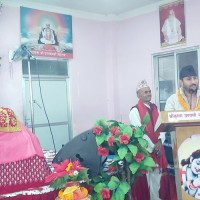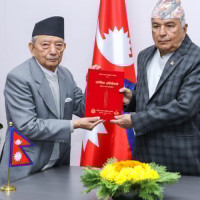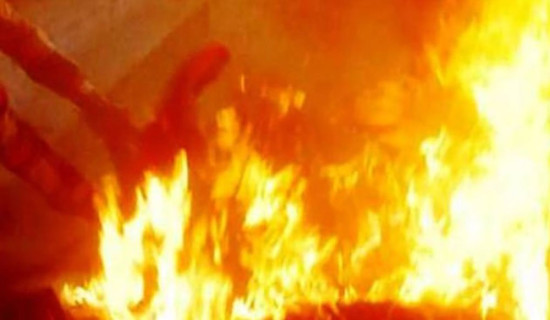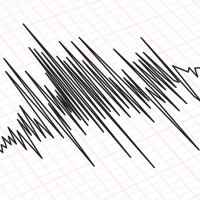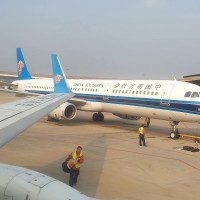- Sunday, 7 December 2025
Behind Indo-Pakistani Ceasefire
India and Pakistan did not allow the tensions between their two sides to escalate when they agreed to a ceasefire on May 10 and left the doors open for talks aimed at ironing out differences and queries pertaining to terrorist attacks in Jammu & Kashmir’s Pahalgam, in which 26 civilians, including a Nepali, were killed. The accord came four days after the two sides resorted to strikes and counterstrikes at each other’s military installations. Escalation of the fighting was prevented when New Delhi and Islamabad agreed to the ceasefire. India’s Operation Sindoor and Pakistan’s Bunyan al-Marsus thrust engaged for about a week, even as foreign governments condemned the terrorist attacks on civilians but asked both Pakistan and India to exercise restraint to ensure that things did not go out of hand.
The 57-member Organisation of Islamic Cooperation also came down heavily on the attackers but pointed out that there was no evidence of Pakistani government’s involvement in the terrorist attacks. The message was not lost on the parties in the conflict. Islamabad’s call for an independent investigation into the deadly incident has gone unheeded. Fears that the conflict might intensify and expand to envelop parts of Western India. The world’s most populous country’s other South Asian neighbours, including Nepal, were in unease and uncertainty over what a prolonged and full-scale war could produce.
Analysts closely watching the development concluded that neither New Delhi nor Islamabad wanted an escalated armed conflict. It was a relief to South Asians and the immediate neighbourhood that New Delhi and Islamabad struck the ceasefire earlier than many had anticipated. For an ongoing cricket match was called off, some 30 cities were alerted for caution and airports were closed as a precaution. Pakistani artistes were banned amidst stray voices that art knows no religion and boundary.
Strategic breakthrough
If the two countries with a history of being under British colonial rule could sit together and sort out their 77-year-old differences over Kashmir, which in the past triggered three wars between them, prospects of meaningful cooperation and enduring peace in South Asia would soar overnight. In the latest flare-up, conflicting views and claims are pouring in. US President Donald Trump has claimed credit for the breakthrough, while some quarters suspect a “fixed match” in the whole affair. One’s guess is that Washington was an ideal choice to play the facilitator’s role when both New Delhi and Islamabad assessed that an end to the latest confrontation was the best option. But then the episode marks New Delhi’s new turn in allowing a third party to coordinate bilateral talks.
In an unexpected twist to the Indo-Pakistani tension-ridden engagement, China as a third party secured a strategic benefit in terms of demonstrating the level of technological quality it has attained in warfare machinery. In a display of speed, lethal power and precision supplied at a big bargain price as against the Indian purchase, the Chinese fighters showcased the manufacturer’s technological prowess. According to CNN, Reuters and French media, China-made J-10Cs that Pakistan deployed had crushed Rafael jets purchased from France. This was a stunning statement of the advanced technology that China has achieved. The advantages thus demonstrated in action put the traditionally reputed weapons suppliers at considerable disadvantage. Buyers know where to go for what level of performance—and at what price.
Beijing boasts low-cost, high-capacity missiles. As far as perception is concerned, the balance of military equipment supply sources is now speculated to have shifted to China. Then came reports of an Egyptian pilot being seen in a J-10C fighter, which led to speculations over the balance of power in North Africa and West Asia in the coming days. MiG-20s and J-10Cs will be competing for markets side by side. Either the price tag has to change in favour of the prospective purchaser or the expensive supplier will have to cool its heels for clients with deeper pockets and continued loyalty—in that order. But of vital importance is pilot training for handling the sophisticated equipment.
Meanwhile, Sino-Pakistani “all-weather ties” and Sino-Russian “ironclad” relationship are being recalled by analysts and reiterated by the concerned capitals. If compelled, who would Moscow choose between Beijing and New Delhi? Let us leave the answer open this time. The 1970s and 1980s have undergone sea changes. The Soviet Union disintegrated nearly 35 years ago and Russia was reduced to a small-time player, as if at the mercy of the US. On the eve of the new millennium, though, Putin took over after President Boris Yeltsin stepped down to enable his deputy to step into the vacant shoes. Yeltsin had extracted Putin’s promise of the directive that Yeltsin and his family members would not be investigated for their activities when Yeltsin was in office for almost two terms.
Openings to look into
Arms purchase diversification between India and Pakistan is an area that analysts have noted with additional interest. The recent experience with Chinese aircraft and other equipment is most likely to nudge Islamabad to the Chinese market more extensively. India, of late, has been importing American defence items, in addition to its long-time arms supplier, Russia. Like India, Pakistan’s Russian weapons purchase record was significant in the past. After their independence from British colonial rule in 1947, India and Pakistan became Commonwealth nations, which is exclusively for Britain and its previous colonies that acquired independence. Fourteen former British colonies agreed to have the British monarch as their head of state, though the debate over the issue has intensified of late.
No Indian cricket team has toured Pakistan since 2008 after a terrorist attack in Mumbai, which New Delhi alleges Islamabad orchestrated, despite the latter’s denial. The Champions Trophy in February this year arranged for a “hybrid model” in deference to the two neighbours’ opposing stances. The ICC intervened to arrange for a third country venue for the two to join cricket competitions. Given the long-felt need for a pragmatic approach to improving India-Pakistan relations, the South Asian Association for Regional Cooperation (SAARC)’s revitalisation should go a long way in sending positive signals to the eight-member grouping. Bangladesh recently expressed interest in the long-delayed SAARC summit conference. Nepal, which hosted the 18th summit in November 2014, is keen to hand over the chair to Pakistan, the next host.
(Professor Kharel specialises in political communication.)




